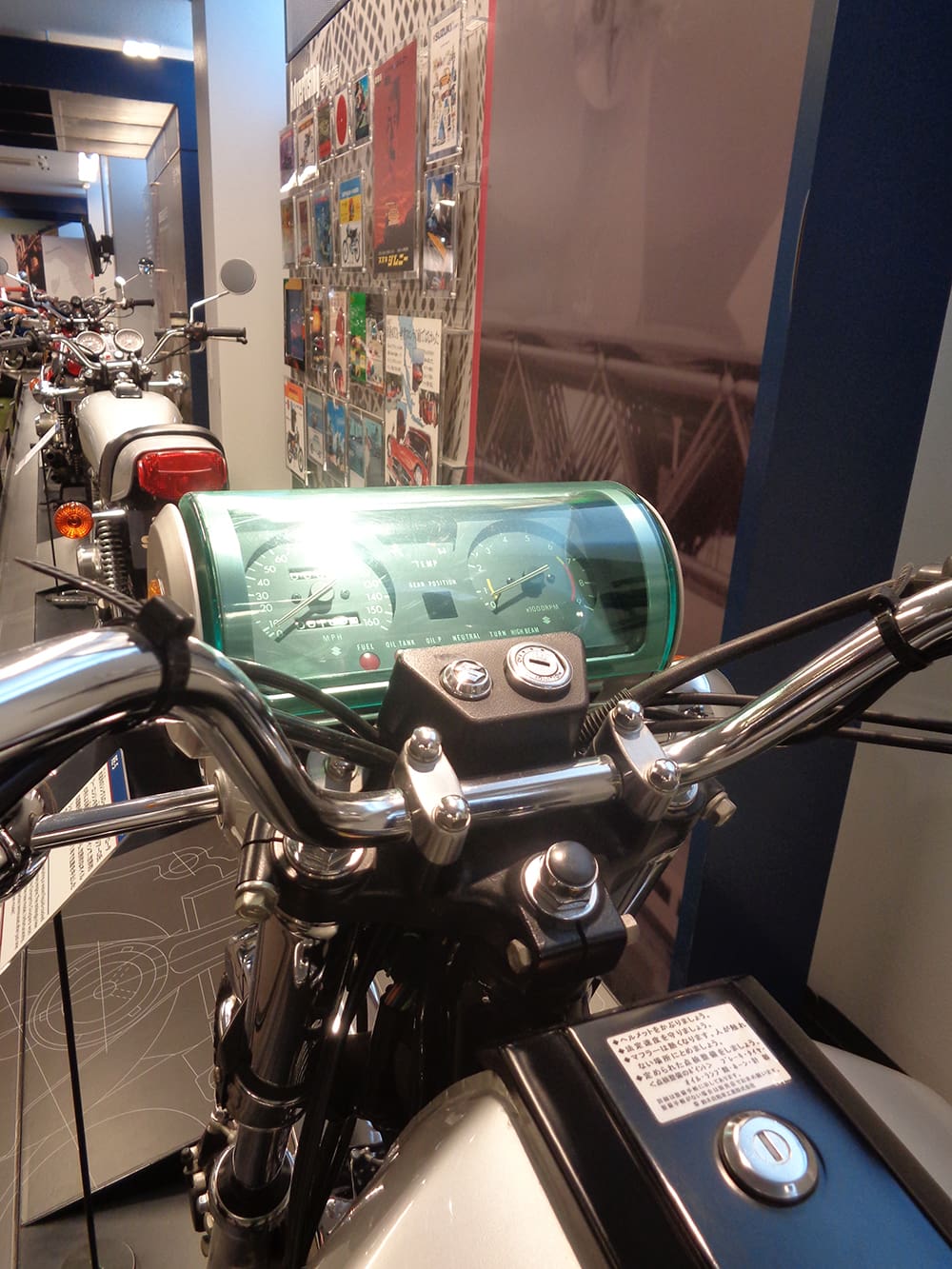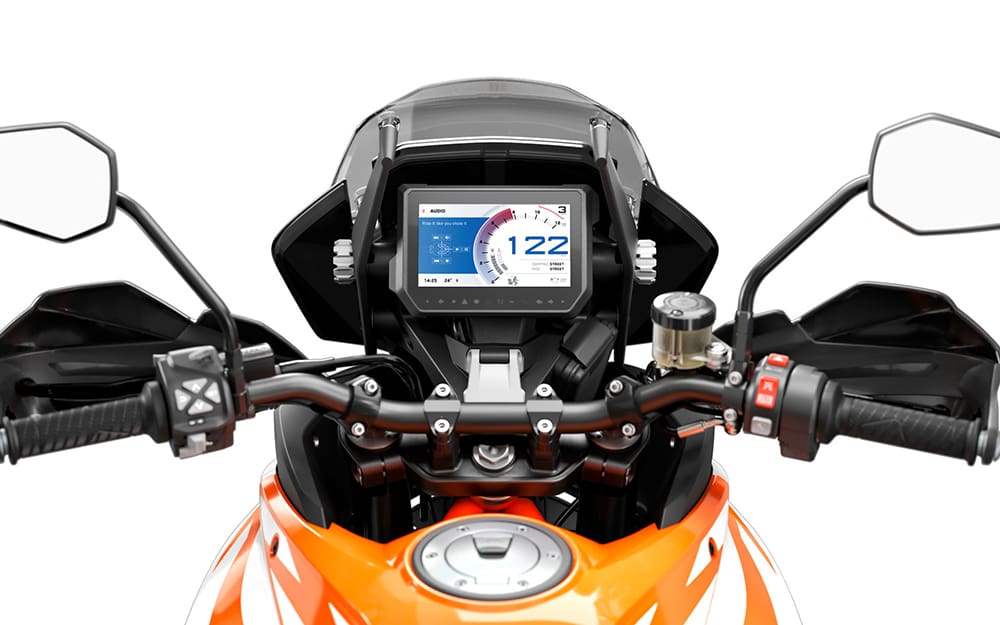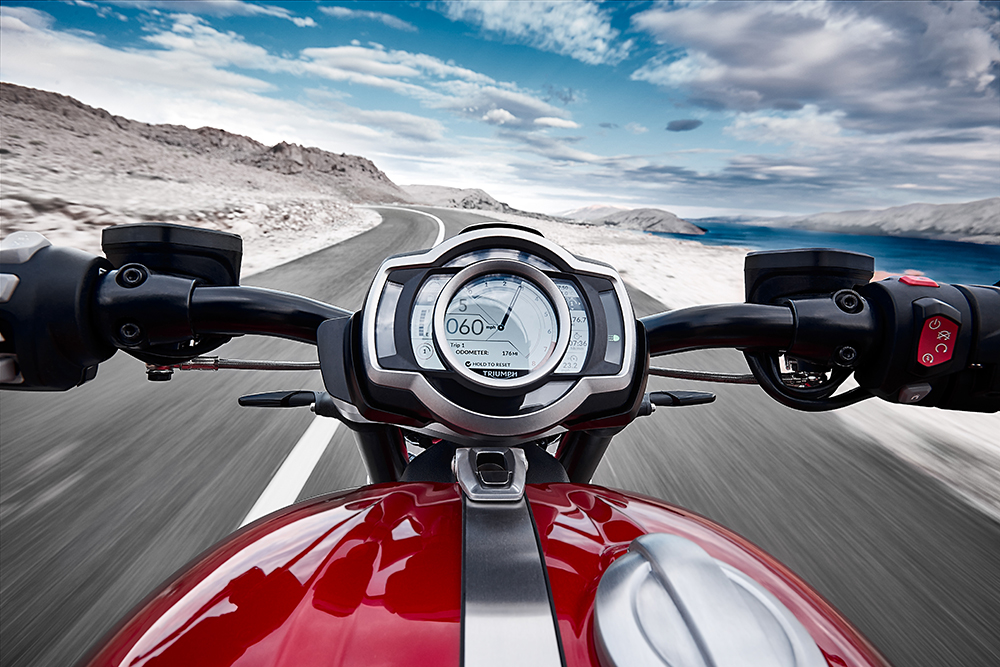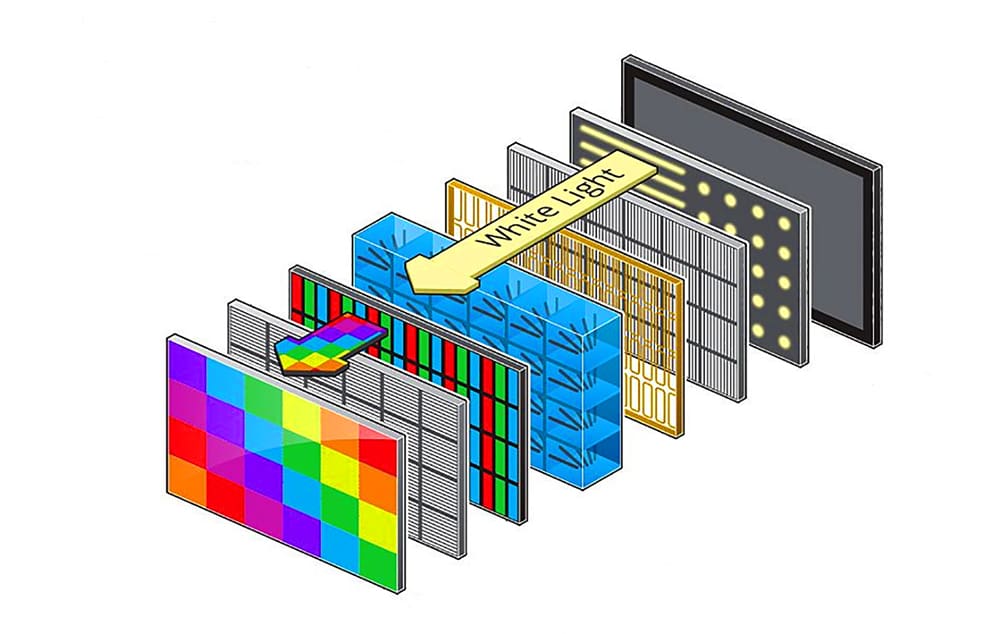And here we all were thinking transistor wirelesses were a think of the past
Fifty years AFTER the moon landing, your humble little motorcycle is stoked with more computing power than the lunar lander. Yep, like your mobile phone, your bike could probably handle thousands of landings on the moon, if only you could ride it there. Yet like your phone, you can’t do much with all that computing ability without a screen acting as the go-between. You need an interface.
TFT LCD technology is that interface. All the potential of the data stored between your front and back wheels is released by the dazzling array of shapes and colours displayed by these newest dashboards. They can show you anything and everything, which in turn allows designers and engineers to load you up with more and more electronic features.
These dashes are a combination of the latest liquid-crystal display (good ol’ LCD) technology and the brilliance of thin-film transistors (TFT). TFT and LCD as a team can show us an endless variety of information in incredible clarity and colour, using very little power in the process. It is light weight and takes up very little space, vital considerations when motorcycle designers choose anything to perch above the steering head.
TFTs are certainly not new. The technology was developed in Bell Labs in the USA 60 years ago. It took a while to evolve and become commercially viable. The first TFT LCD colour TV, the tiny Epson Elf, was launched in 1984. This was just two years after Honda dazzled us with the very advanced VF750S, a bike that included an electronic speedo and tacho, as well as an LCD gear indicator, which doubled as a fault-code display.
But realistically, motorcycles of that era didn’t pack the electronic muscle that makes TFT displays almost compulsory nowadays. In fact, Honda perhaps overstepped the mark with its first VF and stripped much of the tech out of subsequent models. Motorcycles plodded along with analogue dials and filament-lit warning lights for years. That was fine while motorcycles were simple mechanical devices, but they’re now far more than that.

Today we need to control all manner of electronics in our motorcycles. Adjustable engine parameters. ABS. Adjustable traction control. A display of info configured for commuting. Another for track days. Entertainment. Communications. Navigation. Our mechanics need access to fault data. They need to update programming. Hell, there was even that scooter that flashed tweets across your screen. Which was that? No, probably best forgotten…
So the prime reason TFT dashes are all the rage is because they give us immediate access to all those technologies, even while we’re riding.
A TFT LCD display can be a touch screen giving you direct control, although dash- or handlebar-mounted buttons, toggles and switches are more common and practical on motorcycles. Arguably, the best setup puts all the controls on the handlebars, where they’re easily and (you’d hope) intuitively manipulated. BMW, for example, has taken great pains to try to make its multi-controller the centre of a logical system, one that demands little direct concentration to manipulate while you ride.
And therein lies the crux of good TFT-based information displays; is it intuitive, so a rider can scroll menus, get warnings, read information and choose settings without having their attention drawn away from the act of actually riding the motorcycle? Distractions kill.
TFT technology is indispensable in avoiding distraction as manufacturers flash more and more information at riders. Apart from the fact that we couldn’t get all the data without TFT LCD screens, we also couldn’t possibly digest it. We’d be facing dashboards that resembled the pilot’s view in the seat of a Boeing 747; dials, lights, buttons, digits and switches everywhere.
There are more subtle advantages of TFT LCDs. Compared with your old-school LCDs, you get better resolution, smoother movement across the screen, sharper contrast and better clarity in sunshine. That last point is a good one when the sun is reflecting off the screen, although there is still room for improvement there.
Viewing angles are a hot topic of conversation among TFT screen users. One drawback of the currently technology is that once you’re a little off-centre from the screen, the detail begins to disappear before the image vanishes altogether. That’s not a problem for us when we’re riding, as we’re centred in front of it and highly unlikely to need to look at it while dangling off the side of the bike.
Another essential factor in the rise of TFT dashboards is their willingness to take input from anything and everything. It will accept multiple digital inputs, giving you access to all your motorcycle’s vital signs, your sat-nav, your communications, your music. Naturally, it will do this wirelessly when the devices warrant it.
There are no limits to the graphic designs that can be assigned to TFT LCD displays. Take your pick of colours, typefaces, sizes, symbols and everything else. From a rider’s perspective, design is vital. Good dash design puts emphasis on crucial information being very visible. The most important info should have the most prominence.

Naturally, your personal definition of what is and what is not “most important” might vary from one ride to the next, or even one moment to the next. Speed is clearly vital on a speed-controlled highway or in a school zone. Engine speed is more important if you’re on a racetrack.
Knowing the name of the person calling you on the phone could be good to know if you don’t want to be sprung wagging work to ride your motorcycle. TFT dashboards can, if the programming is provided, give you choices about what information sits centre stage at any particular time.
However, if colours and contrast settings don’t maximise clarity, the dash is not good. If text is too small to read instantly, the dash is not good. If the different data are cluttered in a tiny screen, it is not good. If you can’t find your way through menus and back again without taking your eyes off the road for more than a glance, it’s not good.

2020 Triumph Rocket 3 R.
The quality of your own eyes may have something to do with whether a dashboard display works well for you, so try before you buy, and check the options available in the menus.
There are plenty of alternatives to TFT LCD screens, some relying on back-lit panels like TFT LCDs do, others emitting their own light. A third type projects images onto a screen. All three types are in use somewhere already, in TVs, mobile devices and more.
A short step up from TFT, IPS (in-plane switching) uses a different means of exciting the liquid crystals, which orientate differently. The result gives wider view angles, more accurate colours and better image quality, but it costs more and has greater power demands. The benefits probably aren’t worth it for a motorcycle screen, simply because we don’t need the quality that, say, a picture editor might demand from their Apple — which is one example of where IPS screens have been employed.
So-called LED (light-emitting diode) screens may imply they are their light source, but the reality is that the LEDs are usually just the source of backlighting for LCDs. In fact, there’s a good chance your TFT LCD screen is just this type.
OLED (organic LED) is different. As the name implies, they’re made from an organic source, electrically stimulated to produce the desired light. This type of display is used in TVs, computers and mobile devices. A handful of cars are using OLED displays, dating back to the Aston Martin DB9’s debut early this century.
OLED may have a shorter life expectancy, but at about 15,000 hours it’ll still be working long after most bikes are given up for dead. An almost 180-degree viewing angle, exceptional clarity, and small size and low power demands make OLED a good candidate for widespread use in the future. Cost is the prime reason they’re not more popular at this stage.
Further down the track, electroluminescent displays (ELD), and variations on e-paper and other technologies, may come into play. ELD is already in use in many cars but generally in simpler dashboards than what’s being fitted to current TFT-equipped motorcycles.
Cost and efficiency will determine if and when anything else takes over, but for now TFT plays that role beautifully. Because of our mobile phones and computers, we’re already quite used to looking at flat screens, and we almost instinctively know how to use them as the conduit between us and our technology. Where older dashboards used to give us a page full of information, TFT screens give us a tome of information, displayed a page at a time.
Without TFT screens, we would not have access to the myriad technologies that now add efficiency, safety, entertainment and practicality to our everyday riding.

THE ANATOMY OF TFT
At the risk of oversimplifying a complex system that would baffle the average brain, your TFT LCD dashboard is created using layers. The thin film containing transistors — the TFT part — is merely one of them, trapped somewhere near the middle, and sandwiched between sheets of glass or transparent plastic.
There is also a colour-mask layer of pixels, each containing red, green and blue picture elements. Each pixel is allocated its own tiny transistor, which controls the electrical input going to the pixel.
A backlight behind the dash display is illuminated. However, the liquid crystals in the system block that light. Electrical signals to the crystals cause them to alter their orientation, releasing light. There are also polarising filters to add further control to the transmission of light.
Assuming the electrical impulses are correct, the transistors create a dancing light display to shine through the screen, revealing everything you want to know.

PIXEL POWER
Every pixel in a TFT LCD display has its own transistor, maximising control across the whole screen. Pixel count dictates resolution, so the more pixels you have, the better your screen will look. In theory, there’s no reason why you couldn’t have cinema-quality movies playing seamlessly across your dashboard.
Each pixel can be individually controlled, not just to be turned on or off, but for brightness and colour.
It can also be very efficient, in that the distribution of power is extremely fast, allowing very quick re-drawing of the displayed information, and power is only directed to where it is needed.
![]()
Words Mick Matheson Photography AMCN archives